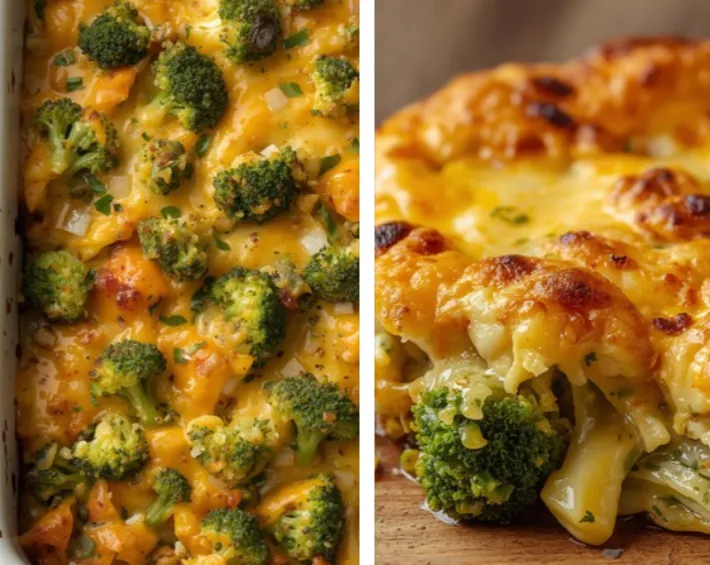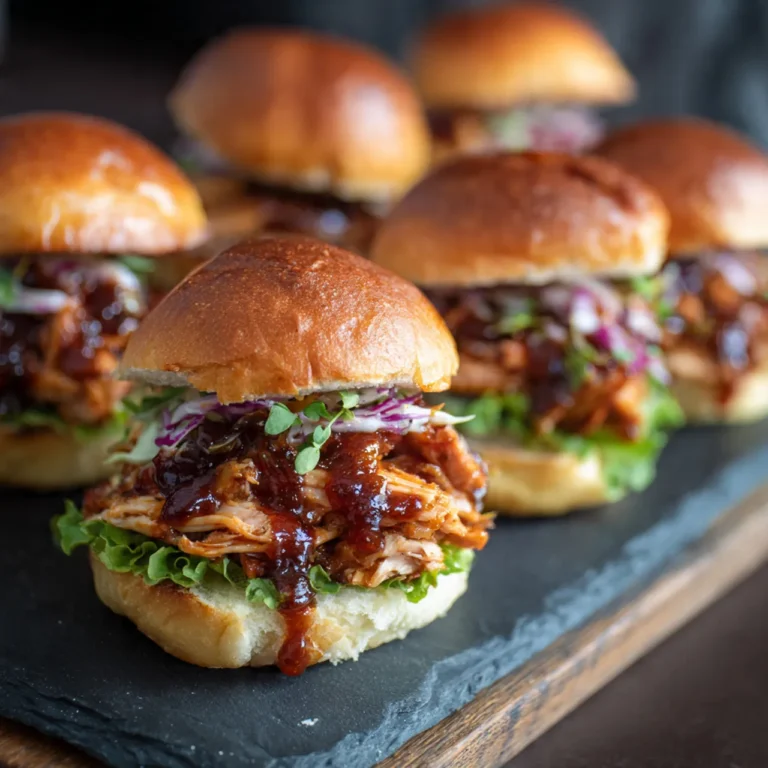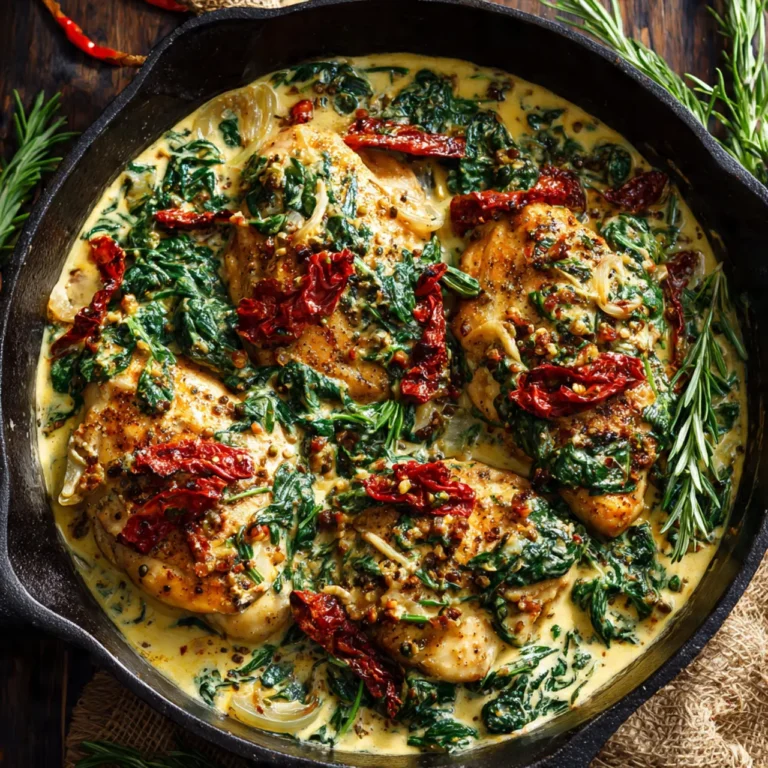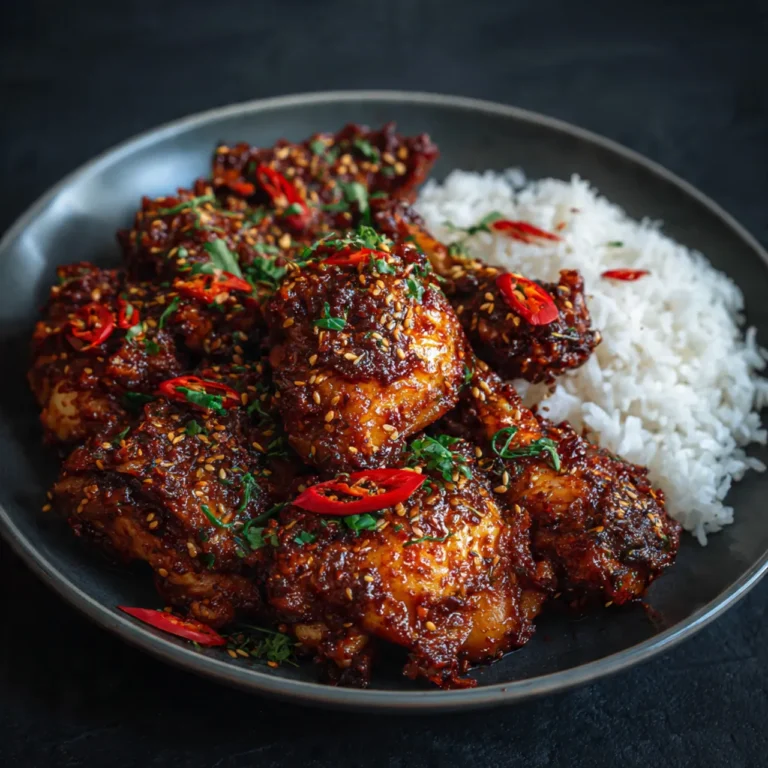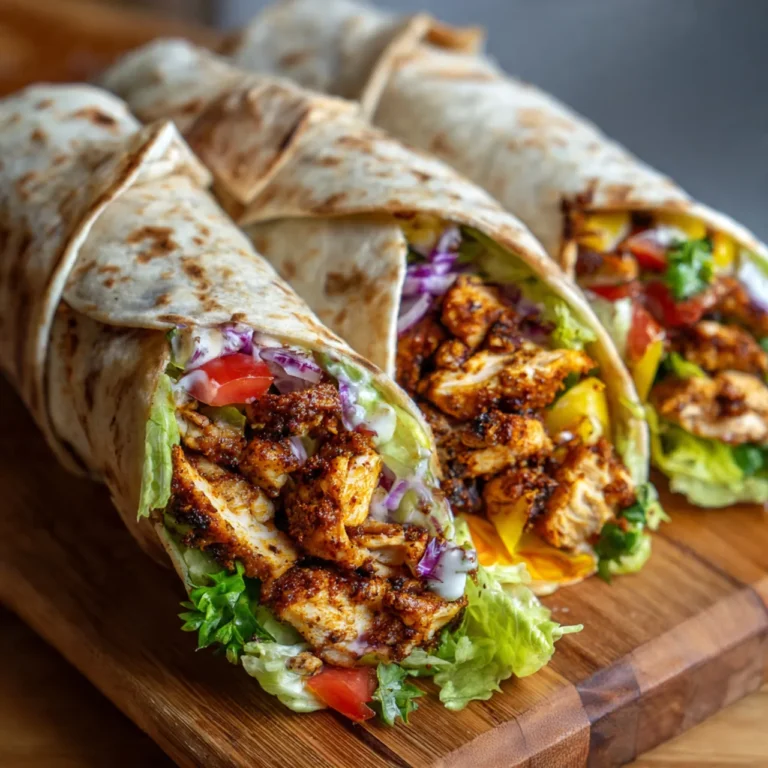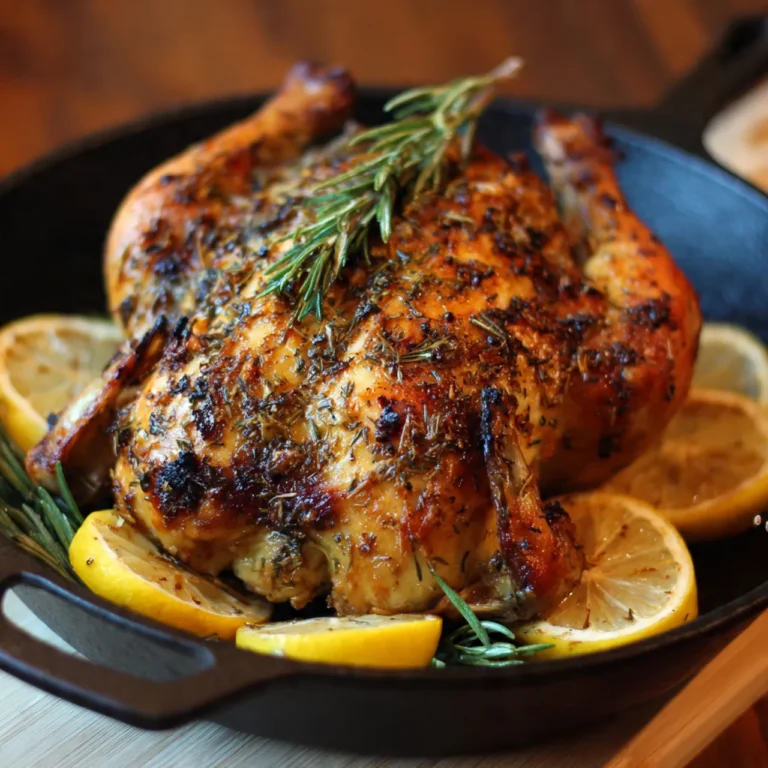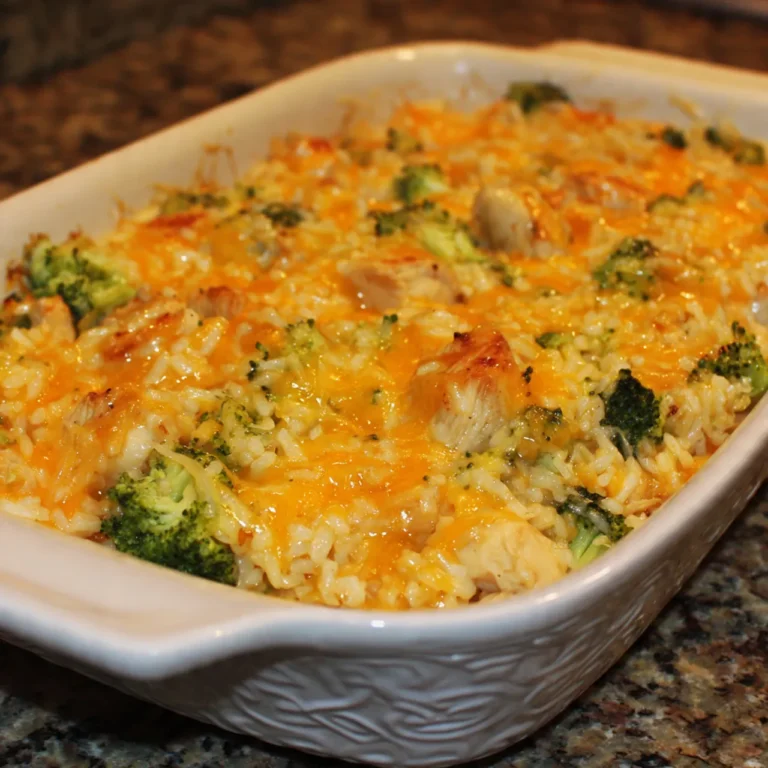Broccoli Cheese Casserole is a beloved staple of American comfort food, celebrated for its creamy texture, gooey cheese, and tender broccoli florets. This casserole is a crowd-pleaser at holiday gatherings, potlucks, and weeknight dinners alike, offering a delicious way to enjoy vegetables while indulging in the rich flavors of cheddar and a velvety sauce. Whether you’re looking for a side dish to complement a festive meal or a hearty vegetarian main, Broccoli Cheese Casserole delivers satisfaction in every bite. This comprehensive guide explores the history of casseroles, the science behind their creamy texture, essential ingredients, step-by-step instructions, expert tips, creative variations, serving suggestions, presentation ideas, nutritional insights, and answers to common questions. By the end, you’ll have all the knowledge and inspiration needed to master this classic dish and make it your own.
The History and Tradition of Casseroles
Casseroles have a long and storied history in American and European kitchens, evolving from simple baked dishes to the comforting, cheese-laden classics we know today. The word “casserole” comes from the French for “saucepan,” and early versions were often one-pot meals combining meat, vegetables, and starches. In the 20th century, casseroles became a symbol of home cooking and hospitality, especially as canned soups and processed cheeses made it easier to create creamy, satisfying dishes with minimal effort. Broccoli Cheese Casserole emerged as a favorite in the mid-20th century, combining the nutritional benefits of broccoli with the irresistible appeal of melted cheese. Today, it remains a staple at family gatherings, church suppers, and holiday feasts.
Why Broccoli Cheese Casserole?
Broccoli Cheese Casserole is more than just a side dish—it’s a celebration of flavor, texture, and nostalgia. The combination of tender broccoli, creamy sauce, and bubbling cheese creates a dish that’s both comforting and satisfying. It’s a great way to encourage picky eaters to enjoy their vegetables, and it can be easily adapted to suit different tastes and dietary needs. The casserole is simple to prepare, can be made ahead, and travels well, making it ideal for potlucks and gatherings. Whether you’re serving it as a side or a main course, Broccoli Cheese Casserole is sure to become a family favorite.
The Science of Creamy, Cheesy Casseroles
The secret to a luscious casserole lies in the balance of moisture, fat, and starch. A classic cheese sauce starts with a roux—flour cooked in butter—which thickens the milk or cream and creates a smooth base for the cheese. The cheese melts into the sauce, adding richness and flavor. Broccoli, when lightly cooked, retains its bright color and tender-crisp texture, providing a fresh contrast to the creamy sauce. Baking the casserole allows the flavors to meld and the top to become golden and bubbly. The result is a dish that’s creamy but not watery, cheesy but not greasy, and packed with flavor in every bite.
Selecting the Best Ingredients
- Broccoli: Fresh broccoli florets are ideal for the best texture and flavor. Frozen broccoli can be used for convenience but should be thawed and drained well.
- Cheese: Sharp cheddar is classic, but a blend of cheeses (such as Gruyère, Monterey Jack, or mozzarella) can add depth and creaminess.
- Milk or Cream: Whole milk, half-and-half, or heavy cream create a rich, velvety sauce. For a lighter version, use low-fat milk.
- Butter: Unsalted butter is preferred for control over salt content.
- Flour: All-purpose flour is used to make the roux that thickens the sauce.
- Onion and Garlic: Sautéed onion and garlic add savory depth.
- Eggs: Some recipes use eggs to help set the casserole and add structure.
- Seasonings: Salt, pepper, mustard powder, paprika, and nutmeg enhance the flavor.
- Topping: Crushed crackers, breadcrumbs, or fried onions add crunch and visual appeal.
- Optional Add-ins: Cooked rice, quinoa, or pasta for a heartier dish; diced ham or bacon for extra protein.
Step-by-Step Recipe: Classic Broccoli Cheese Casserole
Ingredients
- 6 cups fresh broccoli florets (about 2 large heads)
- 2 cups shredded sharp cheddar cheese, divided
- 1 cup shredded mozzarella or Monterey Jack cheese
- 1/4 cup unsalted butter
- 1 small onion, finely chopped
- 2 cloves garlic, minced
- 1/4 cup all-purpose flour
- 2 cups whole milk or half-and-half
- 1/2 teaspoon dry mustard powder
- 1/2 teaspoon paprika
- 1/4 teaspoon ground nutmeg
- Salt and freshly ground black pepper, to taste
- 1/2 cup sour cream or Greek yogurt
- 2 large eggs, lightly beaten (optional, for a firmer set)
- 1 cup crushed buttery crackers or panko breadcrumbs
- 2 tablespoons melted butter (for topping)
Instructions
- Preheat the Oven: Preheat your oven to 350°F (175°C). Grease a 9×13-inch baking dish.
- Prepare the Broccoli: Bring a large pot of salted water to a boil. Add the broccoli florets and blanch for 2-3 minutes, until bright green and just tender. Drain and rinse under cold water to stop the cooking. Pat dry with paper towels.
- Make the Cheese Sauce: In a large saucepan, melt 1/4 cup butter over medium heat. Add the chopped onion and cook until soft, about 3-4 minutes. Add the garlic and cook for 1 minute more. Sprinkle in the flour and cook, stirring constantly, for 2 minutes to form a roux. Gradually whisk in the milk, stirring until smooth. Bring to a simmer and cook until thickened, about 3-5 minutes.
- Add Cheese and Seasonings: Remove the sauce from heat. Stir in 1 1/2 cups cheddar cheese and all the mozzarella until melted and smooth. Add mustard powder, paprika, nutmeg, salt, and pepper. Stir in the sour cream or Greek yogurt. Taste and adjust seasoning.
- Combine and Assemble: In a large bowl, combine the blanched broccoli and cheese sauce. If using eggs, stir them in now for a firmer casserole. Pour the mixture into the prepared baking dish. Sprinkle the remaining 1/2 cup cheddar cheese over the top.
- Prepare the Topping: In a small bowl, mix the crushed crackers or breadcrumbs with 2 tablespoons melted butter. Sprinkle evenly over the casserole.
- Bake: Bake for 30-35 minutes, until the casserole is bubbly and the topping is golden brown. Let cool for 10 minutes before serving.
Variations and Creative Adaptations
Broccoli Rice Cheese Casserole
Add 2 cups cooked rice to the broccoli and cheese mixture for a heartier, more filling dish.
Broccoli Cauliflower Cheese Casserole
Replace half the broccoli with cauliflower florets for a colorful, nutrient-rich variation.
Low-Carb Broccoli Cheese Casserole
Use heavy cream instead of milk and skip the flour, thickening the sauce with cream cheese or a small amount of xanthan gum.
Vegan Broccoli Cheese Casserole
Use plant-based butter, non-dairy milk, and vegan cheese. Substitute nutritional yeast for cheesy flavor and use a flax egg (1 tablespoon flaxseed meal + 3 tablespoons water) if eggs are called for.
Gluten-Free Broccoli Cheese Casserole
Use gluten-free flour for the roux and gluten-free breadcrumbs or crushed rice crackers for the topping.
Spicy Broccoli Cheese Casserole
Add 1-2 diced jalapeños or a pinch of cayenne pepper to the cheese sauce for a spicy kick.
Broccoli Ham Cheese Casserole
Stir in 1 cup diced cooked ham or bacon for a savory, protein-packed meal.
Broccoli Quinoa Cheese Casserole
Add 2 cups cooked quinoa for a nutritious, gluten-free twist.
Broccoli Pasta Cheese Casserole
Mix in 2 cups cooked pasta (such as penne or rotini) for a broccoli mac and cheese hybrid.
Tips for the Perfect Broccoli Cheese Casserole
- Blanch broccoli just until tender-crisp to avoid mushy texture.
- Pat broccoli dry before adding to the sauce to prevent watery casserole.
- Use freshly grated cheese for the best melt and flavor; pre-shredded cheese contains anti-caking agents that can affect texture.
- Whisk the cheese sauce constantly to prevent lumps and ensure smoothness.
- Taste and adjust seasoning before baking; cheese and crackers can be salty.
- Let the casserole rest before serving for easier slicing and better texture.
- For a crispier topping, broil the casserole for 2-3 minutes at the end of baking.
Serving Suggestions
Broccoli Cheese Casserole is a versatile side dish that pairs beautifully with roasted turkey, chicken, ham, beef, or pork. Serve it alongside mashed potatoes, stuffing, or green beans for a classic holiday spread. For a vegetarian main, pair with a hearty salad or grain bowl. Leftovers make a delicious lunch, reheated and served with crusty bread or as a filling for baked potatoes.
Presentation Ideas
Serve in a classic casserole dish or transfer to a decorative baking dish for a festive look. Garnish with fresh parsley, chives, or a sprinkle of paprika for color. For individual servings, bake in ramekins or mini cocottes. For potlucks, use a disposable foil pan for easy transport and cleanup.
The Science Behind Broccoli Cheese Casserole
The roux thickens the sauce by gelatinizing the starch in the flour, creating a stable emulsion that holds the cheese and milk together. Cheese provides both flavor and structure, melting into the sauce and binding the ingredients. Eggs, if used, coagulate during baking, helping the casserole set. Blanching broccoli preserves its color and texture, while baking melds the flavors and creates a golden, bubbly top.
Broccoli Cheese Casserole Around the World
While Broccoli Cheese Casserole is a classic American comfort food, similar dishes are enjoyed worldwide. In the UK, cauliflower cheese is a beloved side, while in France, gratins feature vegetables baked in creamy, cheesy sauces. In Italy, broccoli is often paired with béchamel and Parmesan in baked pasta dishes. Each culture adapts the basic concept to local ingredients and tastes, making cheesy vegetable casseroles a universal favorite.
Health Considerations
Broccoli is rich in fiber, vitamins C and K, and antioxidants. Using low-fat milk, reduced-fat cheese, or Greek yogurt can lighten the casserole. For added nutrition, mix in whole grains, legumes, or extra vegetables. The casserole is naturally vegetarian and can be made gluten-free or vegan with substitutions. For a lower-sodium version, use unsalted butter, low-sodium stock, and reduced-sodium cheese.
Frequently Asked Questions
Can I make Broccoli Cheese Casserole ahead of time?
Yes, assemble the casserole up to a day in advance, cover, and refrigerate. Bake just before serving.
Can I freeze Broccoli Cheese Casserole?
Yes, freeze unbaked or baked casserole for up to 2 months. Thaw overnight in the refrigerator and bake until heated through.
How do I reheat Broccoli Cheese Casserole?
Cover with foil and bake at 350°F until hot, or microwave individual portions.
Why is my casserole watery?
Excess moisture from broccoli or not draining well can cause this. Pat broccoli dry and avoid overcooking.
Can I use frozen broccoli?
Yes, thaw and drain well before using.
How do I make it without canned soup?
This recipe uses a homemade cheese sauce for better flavor and texture.
Hosting with Broccoli Cheese Casserole
Broccoli Cheese Casserole is a crowd-pleaser and can be doubled or tripled for large gatherings. Prepare in advance and bake just before serving for stress-free entertaining. Offer a casserole bar with different toppings—crispy onions, bacon, or extra cheese—for a fun, interactive meal.
Creative Twists
- Add caramelized onions or leeks for sweetness.
- Mix in sun-dried tomatoes or roasted red peppers for color and flavor.
- Top with everything bagel seasoning for a savory finish.
- Swirl in pesto or tapenade for a Mediterranean flair.
- Use smoked cheese or chipotle powder for a smoky touch.
Broccoli Cheese Casserole Recipe (Summary)
Ingredients:
6 cups broccoli, 2 cups cheddar, 1 cup mozzarella, 1/4 cup butter, 1 onion, 2 garlic cloves, 1/4 cup flour, 2 cups milk, seasonings, 1/2 cup sour cream, 2 eggs, 1 cup crackers, 2 tbsp butter.
Instructions:
Blanch broccoli. Make cheese sauce with butter, onion, garlic, flour, milk, cheese, and seasonings. Combine with broccoli and eggs. Top with cheese and crackers. Bake at 350°F for 30-35 min.
Final Thoughts
Broccoli Cheese Casserole is a timeless, versatile dish that brings warmth, color, and comfort to any table. With its simple ingredients and endless adaptability, it invites creativity and personal touches. Whether you stick to the classic or explore new variations, Broccoli Cheese Casserole is sure to become a cherished part of your holiday celebrations and family meals. Experiment with different cheeses, add-ins, and toppings to make it your own. With the tips, recipe, and ideas shared in this post, creating the perfect Broccoli Cheese Casserole is within reach for cooks of all skill levels. Celebrate the season and the joy of gathering with this beloved classic.
Additional Tips for Success
- Always taste and adjust seasoning before baking.
- For extra shine, finish with a brush of melted butter just before serving.
- Let casserole rest a few minutes before serving for best texture.
- Store leftovers in an airtight container and reheat gently.
Nutritional Information (Approximate per serving)
- Calories: 220-320
- Protein: 10-15g
- Fat: 12-18g
- Carbohydrates: 15-22g
- Fiber: 2-4g
- Sodium: 320-480mg
Conclusion
Broccoli Cheese Casserole is a versatile, crowd-pleasing dish that brings together the best of comfort and flavor in a creamy, cheesy, and satisfying format. With its simple preparation, stunning presentation, and endless possibilities for customization, it is a must-have for any holiday feast or family meal. Try different variations, experiment with flavors, and make this classic casserole your own.
